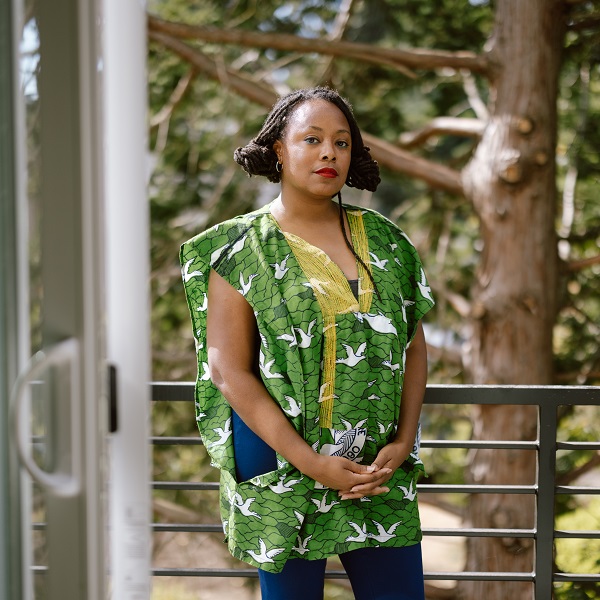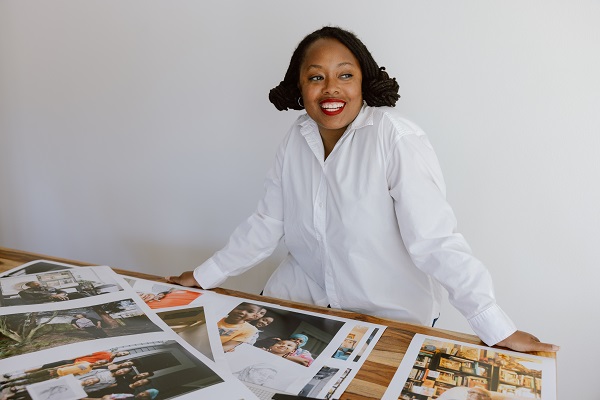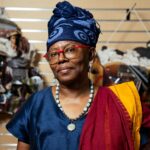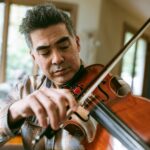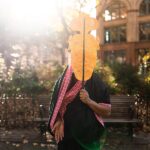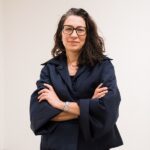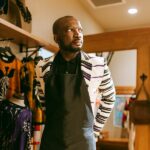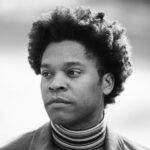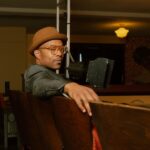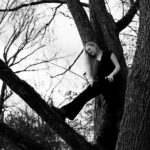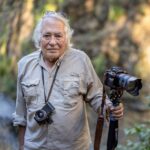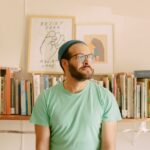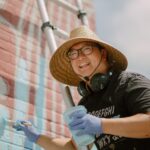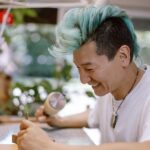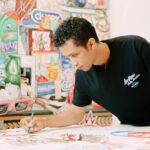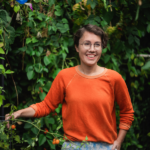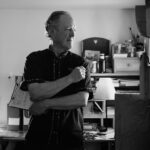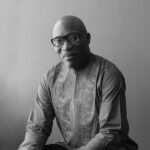Community Clarion: Intisar Abioto Wants Her People To Fly
Written by Amber Flame; Photographed by Katy Weaver
It seems inevitable that Intisar Abioto would pursue an artistic career. Creative practice is simply a fact of life in Abioto’s family: between her parents and four sisters, the multi-hyphenates include filmmaker, poet, drummer, writer, herbalist, ecological thinker, vocalist, multi-instrumentalist, dancer, theater actor, illustrator, visual artist, orator, food creator, assemblage artist, and arts educator. When I ask how her family feels about her career choices, she shrugs, casually. “Everyone’s an artist, so they have their own practices…and sometimes we work on things together.”
Intisar herself holds sway in the realms of dancing/movement art, large public art exhibits and installations, photography, curation, public speaking, and creative community building. The way she speaks about family and community snaps people into focus as if they populate the room with us. We are with her on the streets of Portland, and through her eyes we see the rare Black person, and approach, hungry to document their existence, to collect into community. (See The Black Portlanders, an installation of light-filled portraits from her street photography project.) The primary lens that guides and informs Intisar Abioto in art, in facilitation, in engagement, is always Black people.
As a Black transplant to the Pacific Northwest, I believed at first that I was drawn to Abioto’s work because it felt so firmly rooted in Portland, Oregon. How, I wondered, did this Black artist find so many Black people in OREGON?! It reminded me of going to a Jill Scott concert in Seattle—I wanted to follow all of them home and see where they disappeared to! Maybe it was Portland!
In Black Legend, Black, Oregon, Intisar’s “exploratory photo endeavor,” we see “the lore and living legend of Black presence in Oregon” —artists, elders, poets, historians, and more. The portraits, displayed on the walls of the Oregon State Capitol’s Office of the Governor and activated with live performances of community movement and music, rang like proof of life for me—and I felt a jealous aching for this experience: a brilliant Black creative ensconced in legacy, ancestry, and a vibrant community of artists to sharpen and grow with. Collaboration is too bland a word for what Abioto accomplishes—she is writing into the canon of our existence, of the very realness of those of African descent, here, now. And Portland wasn’t the secret to this mission—she’s not even from Oregon.
Intisar Abioto was born in Memphis, Tennessee, and seems to have emerged from the womb with a body of works-in-progress. Her father was a member of The Nubian Theater, a collective of dancers, drummers, writers, and performers, and so her childhood was steeped in a multiplicity of art forms. “First, I remember dance. Then I started teaching myself photography when I was around fourteen.”
The city, as a creative hub rich in Black culture, was more than home—it was an education in possibility that fed Intisar’s artistic imagination. “Growing up in Memphis, there was a lot of art all around so I could see what it was like, being a Black artist.” That exposure, seeing herself reflected in the art world, shaped her conception of the role of artist: “When I think about being a Black artist, I think of Black liberation, Black community.”
After Intisar studied dance in college, the Abioto family decided to move out of the South. When a small (“Really small—tiny. But it freaked my mom out.”) earthquake crossed California off the list, they settled in Portland and opened a vegan and raw food restaurant together. “I was still planning to do my art, but I wanted to build something with my family.”

